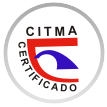Sanitary Protocols and Considerations for the Proper Handling of Pet Carcasses
Abstract
The research highlights the growing importance of pets in people's lives, who consider them family members. This change in perception has led to the need to establish clear protocols for their disposal after death, promoting responsible and respectful practices. Through a mixed methodological approach, existing regulations were identified and the knowledge of pet owners about carcass management was evaluated. The results revealed a lack of familiarity among pet owners with local regulations, in contrast to the adequate knowledge possessed by veterinarians. This has contributed to inadequate practices, such as burial without regulations and abandonment of carcasses, which raises serious concerns for public health and animal welfare. Additionally, it was observed that communities with stricter regulations and effective education programs achieved better results in the management of these waste. Most respondents expressed the need for clear and accessible protocols, indicating a willingness to adopt better practices if provided with the necessary information. Therefore, it is recommended that local authorities, in collaboration with veterinarians and animal welfare organizations, develop education and awareness programs, ensuring dignified and safe handling of pet remains, and fostering a culture of respect towards the beings with whom lives have been shared.
Keywords: Pets, Family members, Protocols, Responsible practices.
Downloads
Published
How to Cite
Issue
Section
License
Copyright (c) 2024 Editorial "Universo Sur"

This work is licensed under a Creative Commons Attribution-NonCommercial-NoDerivatives 4.0 International License.
La editorial "Universo Sur", de la Universidad de Cienfuegos, publica el contenido de la Revista "Universidad y Sociedad" bajo una Licencia Creative Commons Atribución-NoComercial-SinDerivar 4.0 Internacional.
© Podrá reproducirse, de forma parcial o total, el contenido de esta publicación, siempre que se haga de forma literal y se mencione la fuente.










